
Max Payne is a 2001 third-person shooter game developed by Remedy Entertainment. It was originally released for Windows by Gathering of Developers in July 2001, and was later ported by Rockstar Games to the PlayStation 2 and Xbox in December 2001, and by MacSoft and Feral Interactive to Mac OS X in July 2002. A version of the game for the Game Boy Advance, featuring an isometric perspective but retaining most of the original's gameplay elements, was released by Rockstar in December 2003, and an enhanced port for mobile devices was published in 2012 to coincide with the release of Rockstar's Max Payne 3. A Dreamcast version of the game was also planned, but was canceled due to the discontinuation of the console in 2001. Max Payne was also made available on Xbox 360 as part of Xbox Originals program in 2009, on PlayStation 3 as a PS2 Classic in 2012, on PlayStation 4 in 2016, and on Xbox One and Xbox Series X/S in 2021, due to the consoles' respective backward compatibility and emulation features.

The Elder Scrolls IV: Oblivion is a 2006 action role-playing game developed by Bethesda Game Studios, and co-published by Bethesda Softworks and 2K Games. It is the fourth installment in The Elder Scrolls series, following 2002's The Elder Scrolls III: Morrowind, and was released for Microsoft Windows and Xbox 360 in 2006, followed by PlayStation 3 in 2007. Taking place within the fictional province of Cyrodiil, the game's main story focuses on the player character's efforts to thwart a fanatical cult known as the Mythic Dawn that plans to open portal gates to a demonic realm known as Oblivion.

Paradox Interactive AB is a video game publisher based in Stockholm, Sweden. The company started out as the video game division of Target Games and then Paradox Entertainment before being spun out into an independent company in 2004. Through a combination of expanding internal studios, founding new studios and purchasing independent developers, the company has grown to comprise nine first-party development studios, including their flagship Paradox Development Studio, and acts as publisher for games from other developers.
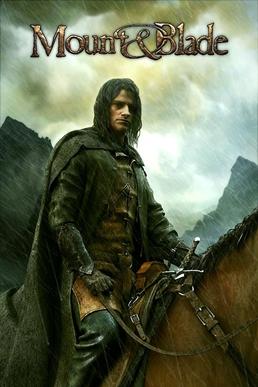
Mount & Blade is a 2008 medieval strategy action role-playing game for Windows, developed by Turkish company TaleWorlds Entertainment, and published by Swedish company Paradox Interactive. In the game, the player controls a customized character to battle, trade, and manage a fief in the medieval land of Calradia. The game was developed by Armağan Yavuz and his wife İpek Yavuz, the founders of TaleWorlds Entertainment. The game was fully released on September 16, 2008, though alpha versions of the game were available prior to the full release.

Hulk is a 2003 action video game developed by Radical Entertainment and published by Universal Interactive for the PlayStation 2, Xbox, GameCube, and Microsoft Windows. The game primarily features beat 'em up gameplay showcasing the Marvel Comics superhero Hulk, and also includes stealth-based levels featuring the Hulk's human alter-ego Bruce Banner. While the game is a tie-in to the film of the same name, its narrative serves as a sequel, taking place years after the events of the film. The plot follows the Hulk and Banner, who must battle their arch-nemesis the Leader and stop him from unleashing an army of mutants upon the world.
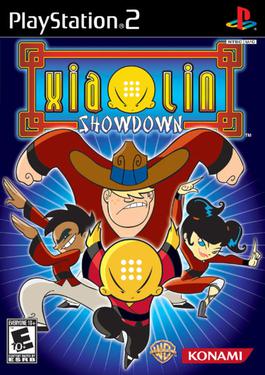
Xiaolin Showdown is a beat 'em up and fighting video game based on the animated television series of the same name. It was released for the PlayStation 2, PlayStation Portable, and Xbox on November 14, 2006, in North America and in Europe on June 29, 2007. The game was later ported over to the Nintendo DS on November 28, 2006, in North America and in Europe in February 2007. Players are able to play as the Xiaolin Apprentices. The game can be played with up to four players locally.

Pool Paradise is a 2004 pocket billiards video game, developed by Awesome Studios, and published by Ignition Entertainment, released for Microsoft Windows, PlayStation 2, and GameCube. The game is the fourth game to be endorsed by professional snooker and pool player Jimmy White.
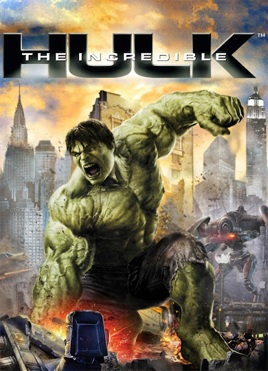
The Incredible Hulk is a 2008 video game published by Sega and developed by Edge of Reality for the Xbox 360, PlayStation 3, Wii, PlayStation 2, and Microsoft Windows. The game, based on the film of the same name, follows scientist Bruce Banner as he defends himself from the military and the Enclave organization while searching for a cure to a condition that transforms him into a monstrous being known as the Hulk. The game takes place in an open world recreation of Manhattan, and the Hulk has a variety of attacks and abilities for destroying enemies and causing environmental destruction. Apart from the main story, there are numerous mini-games and collectibles that can unlock new content.

Section 8 is a first-person shooter video game developed by TimeGate Studios and published by SouthPeak Games. It utilizes the Unreal Engine 3 and was released for Microsoft Windows, PlayStation 3 and Xbox 360. It was released in September 2009 for Xbox 360 and PC, and for the PlayStation 3 on March 25 in North America and April 15, 2010, in the PAL region.

Asobo Studio SAS is a French video game developer based in Bordeaux and founded in 2002. The studio is most known for developing video game adaptations of several Pixar movies, A Plague Tale: Innocence, and the 2020 and 2024 versions of Microsoft Flight Simulator. To develop most of their games, they use their own game engine called Zouna, which was originally developed in the 1990s by some of their own employees who used to work at Kalisto Entertainment. It was later further developed by Asobo. The studio's name is derived from the Japanese word "asobō" (遊ぼう) that means "let's play".

Lead and Gold: Gangs of the Wild West is a team-based third-person shooter multiplayer video game. It was developed by Fatshark and published by Paradox Interactive and released in 2010 for Microsoft Windows via Steam and the PlayStation 3 via the PlayStation Network. An Xbox Live Arcade version was announced, but it was cancelled.

Magicka is an action-adventure game developed by Arrowhead Game Studios. It was released via Steam for Microsoft Windows on January 25, 2011.
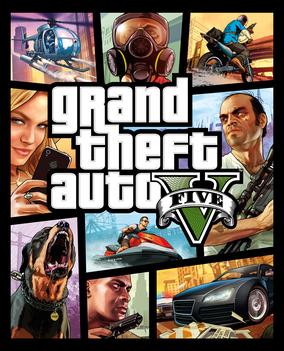
Grand Theft Auto V is a 2013 action-adventure game developed by Rockstar North and published by Rockstar Games. It is the seventh main entry in the Grand Theft Auto series, following 2008's Grand Theft Auto IV, and the fifteenth instalment overall. Set within the fictional state of San Andreas, based on Southern California, the single-player story follows three protagonists—retired bank robber Michael De Santa, street gangster Franklin Clinton, and drug dealer and gunrunner Trevor Philips, and their attempts to commit heists while under pressure from a corrupt government agency and powerful criminals. Players freely roam San Andreas's open world countryside and fictional city of Los Santos, based on Los Angeles.
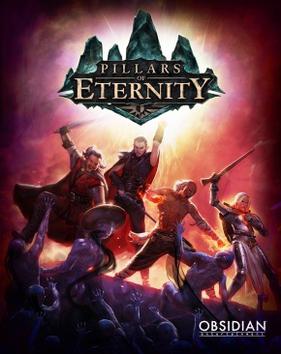
Pillars of Eternity is a 2015 role-playing video game developed by Obsidian Entertainment and published by Paradox Interactive for Windows, OS X, and Linux. The game is a spiritual successor to the Baldur's Gate and Icewind Dale series, along with Planescape: Torment. Obsidian started a crowdfunding campaign on Kickstarter for it in September 2012, raising over US$4 million. The game uses the Unity engine.

March of the Eagles is a grand strategy video game developed by Paradox Interactive and released on 19 February 2013. The game centres on the time period of 1805–1820. It started life as a sequel to AGEOD's Napoleon's Campaigns, and was originally titled Napoleon's Campaigns II. As AGEOD was bought by Paradox, they developed and retitled the game. Virtual Programming released a Mac OS X version of the game on 9 May 2013.
Arrowhead Game Studios is an independent Swedish video game developer. It was established in 2008 by a group of Luleå University of Technology students studying in Skellefteå. The company gradually moved to Stockholm in 2011–2012. As of 2024, the studio employs about 120 people.
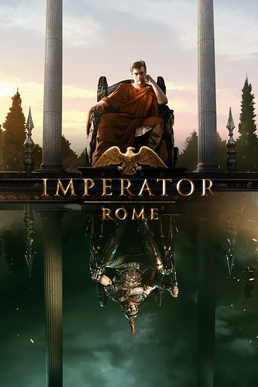
Imperator: Rome is a 2019 grand strategy wargame developed by Paradox Development Studio and published by Paradox Interactive. It is a spiritual successor to Europa Universalis: Rome (2008). It received generally positive reviews from critics, however development and support for the game was suspended by May 2021.
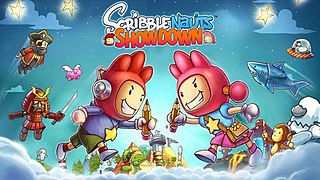
Scribblenauts Showdown is a party game developed by Shiver Entertainment and published by Warner Bros. Interactive Entertainment for the Nintendo Switch, PlayStation 4, and Xbox One in March 2018. The game is the sixth installment in the Scribblenauts franchise, created by 5th Cell. Showdown sees players playing minigames against other players or CPUs.
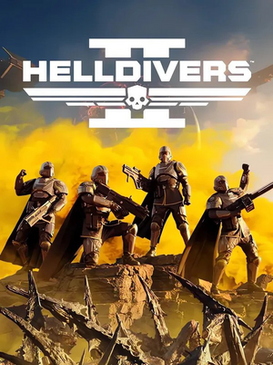
Helldivers 2 is a 2024 cooperative third-person shooter game developed by Arrowhead Game Studios and published by Sony Interactive Entertainment. The game is the direct sequel to Helldivers, a 2015 top-down shooter. It was released for PlayStation 5 and Windows on 8 February 2024.

















